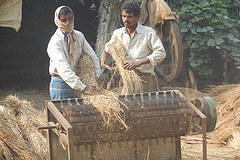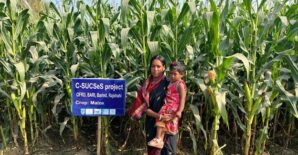Climate change poses a serious threat to the agricultural sector, increasing pressure on natural resources such as land and water. The Inter-Governmental Panel on Climate Change (IPCC) has argued that anthropogenic emissions of greenhouse gases (GHGs) are the main cause of climate change. Due to increased anthropogenic emissions of GHGs, the Earth’s temperature increased by 0.740C between 1906 and 2005. It is also estimated that, by the end of the 21st century, crop production loss in India could be 10-40 per cent, despite the beneficial effects of higher CO2 on crop growth.
In the recent discussion paper titled Farmers’ Preferences for Climate-Smart Agriculture - An Assessment in the Indo-Gangetic Plain, the authors try to assess farmers’ preferences and willingness to pay (WTP) for various climate-smart interventions in the rice-wheat cropping zones in the Eastern Indo-Gangetic Plain (IGP) and Western IGP of India such as Bihar and Haryana.
In this study, the farmers’ choices were assessed among five types of technologies: water–smart; energy-smart; nutrient-smart; weather-smart; and the introduction of stress-tolerant crops and diversification through a willingness to pay. Farmers in the Eastern IGP expressed preferences for laser land leveling (LLL) and crop insurance for both rice and wheat; in the Western IGP, technologies such as LLL and irrigation scheduling were preferred for both rice and wheat. Other technologies preferred were zero-tillage, system rice intensification (SRI), weather-risk insurance and green manure. This assessment of farmers’ preference indicates that they are keen to adopt new technologies that would transform agriculture into a relatively more productive, higher-income and lower-carbon activity. Climate-smart Agriculture (CSA) requires a package of practices to achieve the desired objectives, but adoption is largely dependent on farmers’ preferences and their capacity and wiliness to pay (WTP).
The authors stressed that, for farmers to adopt these technologies, effective institutions and sustained policy support would be needed, such as:
- better programmes for facilitating easy credit;
- providing insurance cover to climate–induced risks and uncertainties;
- creating institutions to develop capacity among farmers;
- developing markets for accessing inputs and recognizing CSA as an engine of green growth and a provider of environmental service; and
- paying farmers for these services.



